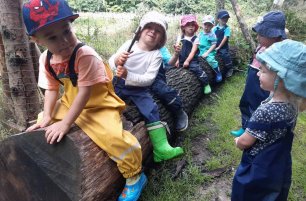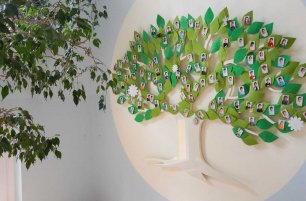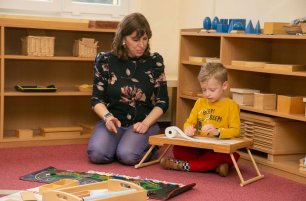Mones
Sorry, this article is only in Czech.

At IMSP we are fortunate enough to have access to a forest right on our doorstep. This offers invaluable opportunities for our toddlers to explore the natural world with the support of their guides. Interaction with the natural environment provides mental and physical health benefits for children and adults alike and allows children to be inspired by the world around them, away from their usual home or classroom environments.
Read more
The purpose of the Grace and Courtesy curriculum in Montessori is to offer our children the best possible assistance on this path. Explaining and modeling clearly, we share the most harmonious ways of behaving, relating and communicating, and help children practice and master them. Step by step, from the simplest skills (like saying “excuse me” or shaking hands) children build a “vocabulary” of actions that allows them to act appropriately and feel confident in social settings. How do we actually practice it in particular age groups?
Read more
We're excited to celebrate 20 years since IMSP first opened its doors to the Prague community. Two decades spent working with parents, teachers, and staff that share our same passion for holistic education is something we’re proud of. The Montessori method is community-driven, and as we look back on our achievements so far, we want to take time to thank the people that made it all possible.
Read more
As a child, did you want to become a teacher, or anticipated becoming one?
Read more
Grace and Courtesy is a major part of the Practical Life curriculum from infancy through adolescence. You might overlook the Grace and Courtesy curriculum when you first visit a Montessori classroom; unlike Mathematics or Language, there usually isn’t a dedicated shelf or corner for it. However, it is nonetheless an essential part of the curriculum, with set lessons and goals; its „didactic materials“ are the teachers themselves, as well as the children’s community. Its aim is far more than simply teaching etiquette: it is to aid the self-construction of the child in their task to assume their full place in the human community.
Read more